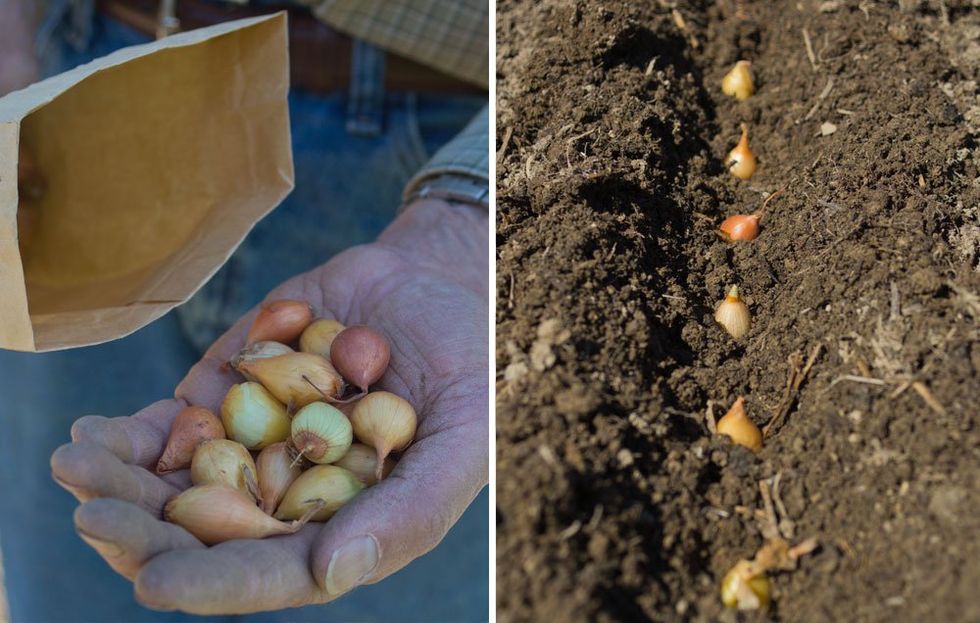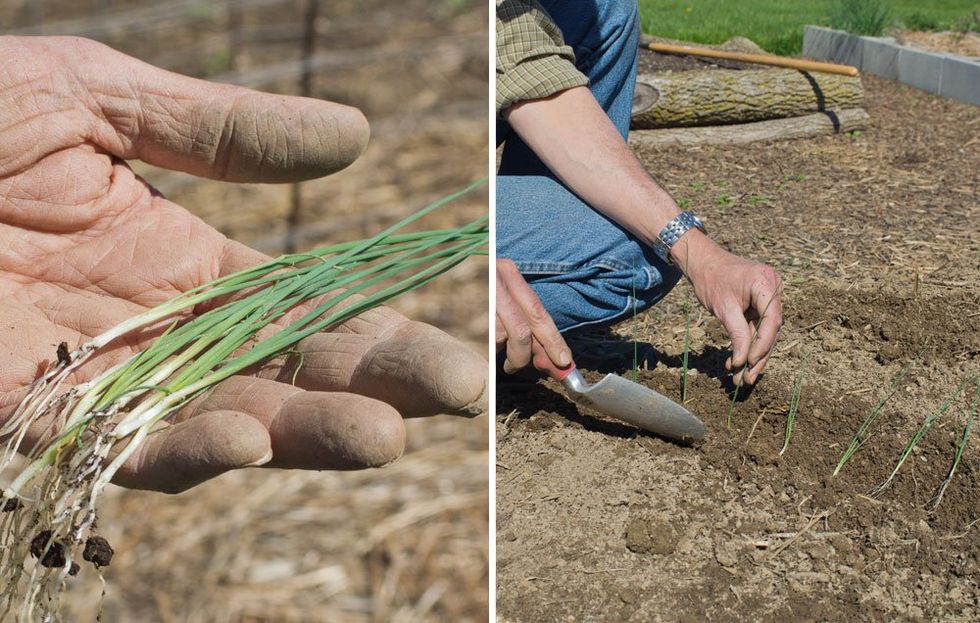3 Different Ways to Plant Onions in Your Backyard This Year
The number of daylight hours you get matters.
There's an onion for nearly every taste and culinary purpose: mild to pungent, tiny pearl onions to big Bermudas. Home gardeners get a choice in how they plant onions, too, with popular methods including sets, transplants, and seeds. Some even employ all three methods under the theory that you can’t have too many onions!
First, find out which varieties do best in your region. Since the lengthening days of late spring trigger the transition from growing leaves and roots to the business of forming bulbs, the types of onions that succeed in Northern states differ from those in the South.
Seed packets and catalog descriptions should reveal which varieties work well in short-day regions (those that form bulbs when day length is only 10 to 12 hours), intermediate-day regions (12 to 14 hours), or long-day regions (14 to 16 hours). A few onions are considered day-neutral and can grow anywhere.
Dixondale Farms, which grows and sells onion transplants, provides this map to aid in variety selection. Note the area of overlap between long-day and intermediate-day regions where varieties of either type can grow and a similar overlapping area for intermediate-day and short-day varieties. Canadian gardeners should select long-day varieties.
Once you've found the right type for your garden, here's how each planting method works and how to get started:
Watch Next


40 Summer Flower Options for Your Garden

The Anti-Aging Effects of Rosehip Oil

40 Dreamy Small Garden Ideas

How to Grow an Avocado Plant Indoors











